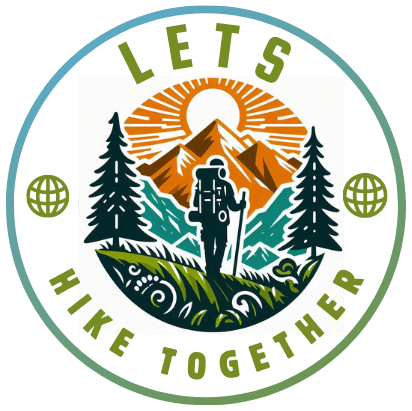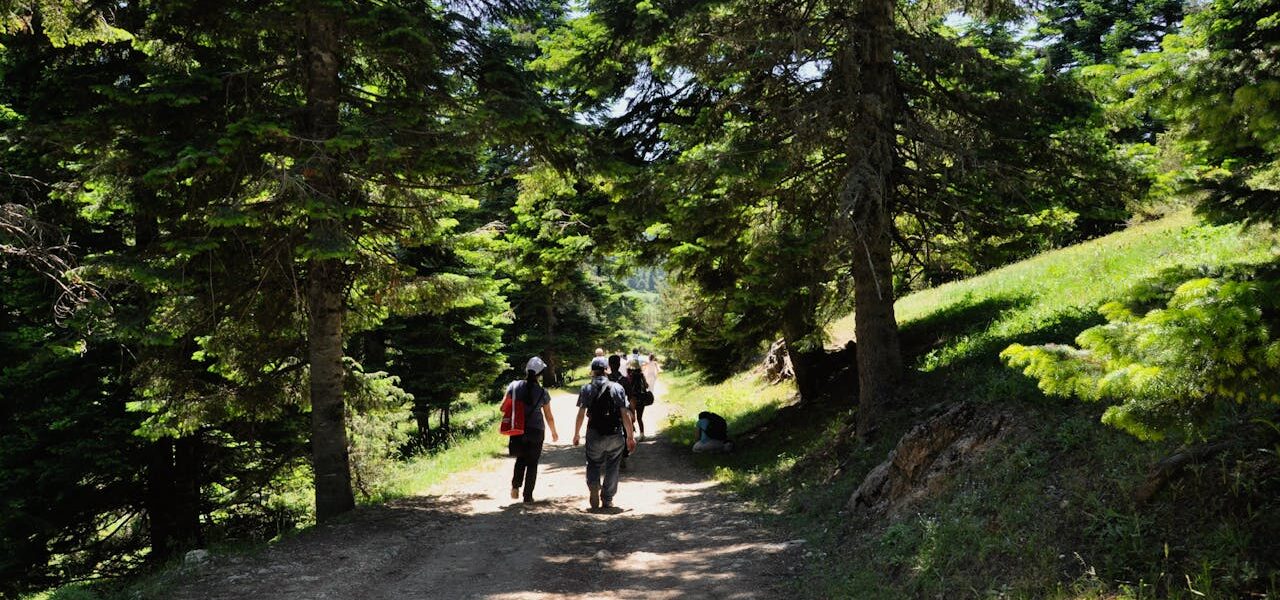Picture this: sunlight streaming through the trees, a gentle breeze caressing your face, and the sound of crunching leaves underfoot. Sounds like a perfect hike, right? But hold on. As the temperature climbs, staying cool isn’t just about comfort; it’s about safety, too.
Table of Contents
Hydration and Cooling Essentials for Summer Hikes
Choosing the Right Time and Trail
Prioritizing Safety while Hiking in Hot Weather
Recognizing When It’s Too Hot to Hike
Optimal Summer Hiking Attire: Dress to Impress (and Stay Cool!)
Building Endurance and Experience: Preparing for Hot Weather Hikes
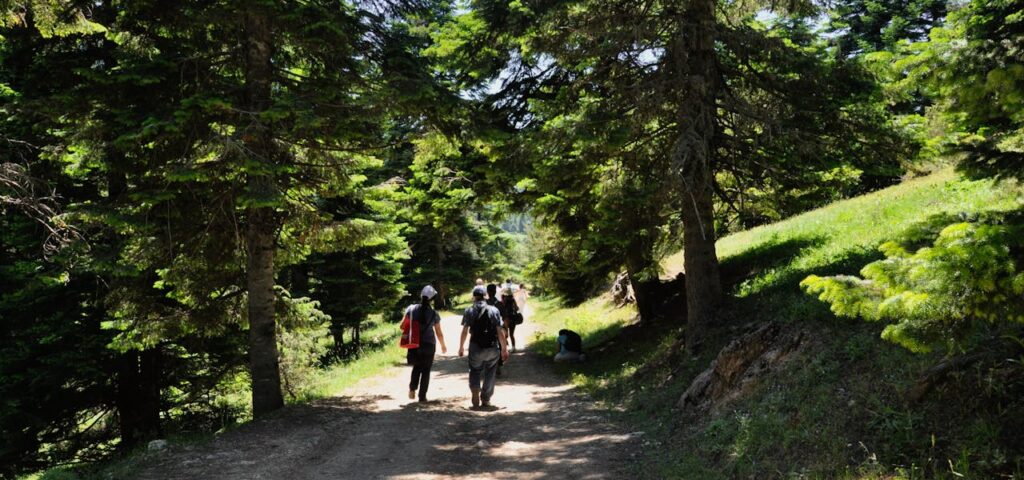
Hydration and Cooling Essentials for Summer Hikes
Hydration is your best buddy when hitting the trail on a hot day. Sip water frequently rather than guzzling it all at once. Consider investing in a hydration pack for easy access while you move. Also, munching on refreshing snacks like juicy fruits can give you a hydration boost alongside some sweet natural sugars for energy.

Summarizing of Summer Hiking Safety Tips
Smart cooling tips:
- Bring a neck cooling towel
- Use a spray bottle or handheld mister
- Consider a wearable fan on exposed trails
Choosing the Right Time and Trail
Seeking out trails that offer plenty of shade can be a game-changer. The tree cover not only shelters you from direct sunlight but also helps regulate your body temperature. Pro tip: trails by water bodies like lakes or rivers often provide cooler surroundings thanks to the evaporative cooling effect.
Cooling gear can be a good investment for those blazing summer days. Think hand-held misters or a simple spray bottle, and those nifty cooling towels you can drape around your neck. There are even wearable fans these days that blow a refreshing breeze while you hike.
Timing is key. Hitting the trail early in the morning or towards late afternoon, when temperatures dip lower, can make the experience way more enjoyable. Avoid the peak sun hours from 11 AM to 3 PM, unless you’re feeling particularly adventurous and have taken every possible precaution to stay hydrated and cool.

Summarizing – How to Stay Cool on Hikes:
🌳 Choosing the Right Time and Trail
Timing matters.
- Avoid hiking between 11 AM and 3 PM
- Start early in the morning or go later in the day
- Select shaded trails, or those near lakes, rivers, or waterfalls for natural cooling
Use apps like AllTrails to find low-sun exposure routes.
Prioritizing Safety while Hiking in Hot Weather
Understanding the signs of dehydration and heat exhaustion is crucial when you’re hiking in the summer heat. Stopping to rest is important if you feel dizzy, thirsty, or notice your skin isn’t sweating. These could be early signs that your body needs a break from the heat. When these symptoms hit, hydrating is a must, and seeking shade immediately becomes top priority.
Packing an emergency kit might just be your peace of mind out there. Make sure it’s got essentials like a basic first aid kit, a whistle, and a compact space blanket. These tools are straightforward but can be lifesavers if things veer off course. Extra water or electrolyte tablets can also make a big difference when the heat is fierce.
The buddy system can be a safety net. Hiking with a friend doesn’t only make the trek more fun, it also adds that extra layer of security. You’re there for each other to handle any quick situation, share the weight of gear, and ensure everyone is keeping cool and hydrated.
Keeping in touch with the outside world is important too. Before setting out, share your planned route with someone not on the hike. Take a fully charged phone, and maybe even a backup charger. Trail maps or GPS devices are beneficial, providing reassurance that help is just a call or a quick orientation check away.
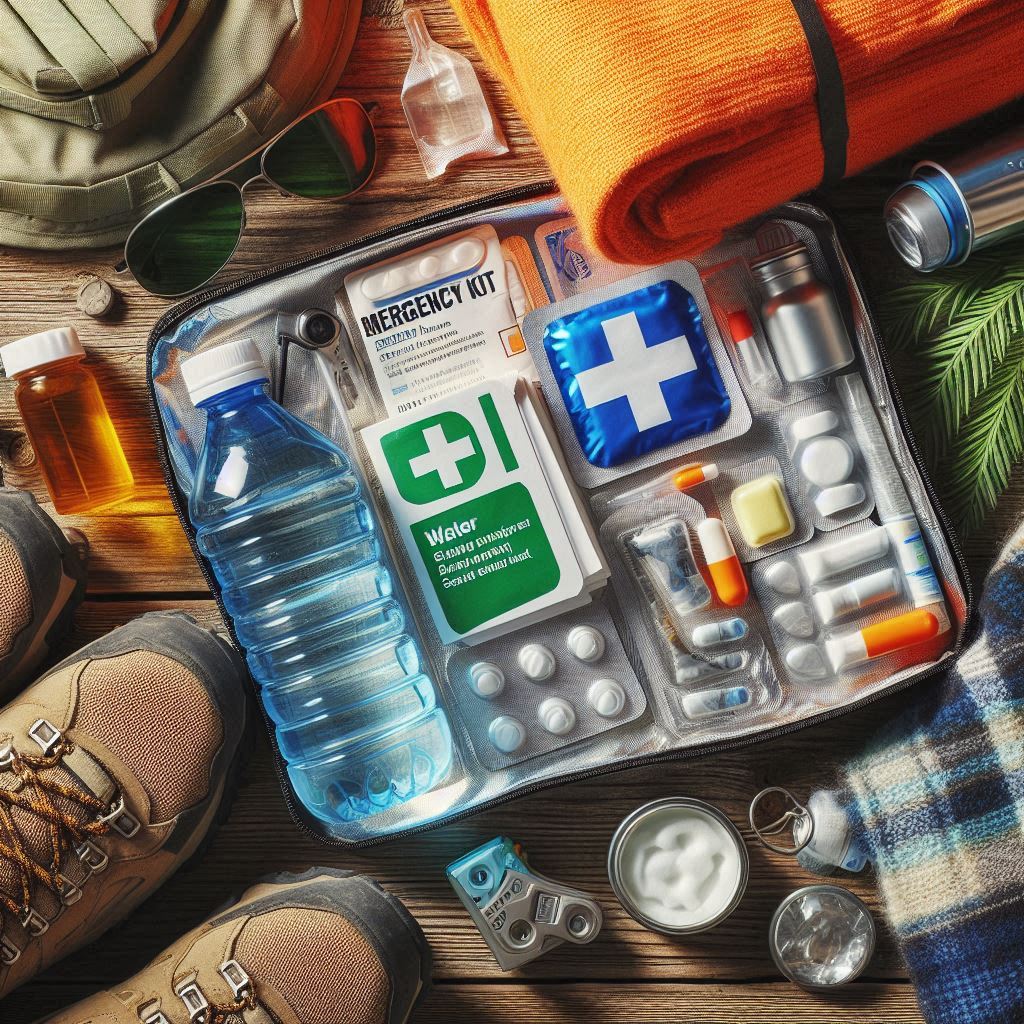
Summarizing – What to Wear Hiking in Hot Weather:
What to Wear Hiking in Hot Weather
✅ Breathable, Lightweight Clothing
- Opt for moisture-wicking materials like polyester or merino wool
- Avoid heavy cotton on long hikes
✅ Sun Protection Essentials
- Wide-brim hat for face and neck
- UV-blocking sunglasses
- Sunscreen (SPF 30+), reapplied every 2 hours
✅ Summer-Ready Footwear
- Choose lightweight hiking boots or trail shoes with good airflow
- Use moisture-wicking socks to prevent blisters
✅ Smart Layering
Carry a light long-sleeved layer to protect skin and adapt to shade or wind.
Recognizing When It’s Too Hot to Hike
Weather reports are your first line of defense for determining if it’s too hot to hit the trail. Pay close attention to the UV index, as well as temperature forecasts. A high UV index can mean harmful exposure even if the heat feels tolerable. It’s smart to plan around days with moderate UV exposure if possible.
Humidity levels can deceivingly elevate the perceived temperature, making a day seem hotter than it actually is. The “feels like” temperature can be a gut check; if it seems too high, listen to your instincts. High humidity can make it difficult for sweat to evaporate, impairing your natural cooling system.
Sometimes, an alternative activity is the way to go. Consider indoor workouts or perhaps a shady park walk if the sun is unrelenting. Not every day is a trail day, and that’s okay. This way, you’re preserving your energy for hikes when conditions are more favorable.
Delays aren’t setbacks when it comes to safety. Postponing a hike due to extreme weather acknowledges the unpredictable nature of outdoor adventures. Planning flexibility into your schedule can ensure safety stays ahead of ambition. Always remember, the great outdoors with its captivating paths isn’t going anywhere.
Summarizing – Hiking Heat Exhaustion Prevention:
🏋️♂️ Preparing Physically for Hot-Weather Hikes
Build your heat tolerance and stamina with:
- Short warm-weather hikes
- Gradually increased duration
- Monitoring how your body handles exertion in heat
Pro Tip: Join hiking forums or local clubs to get advice, share routes, and learn from experienced hikers.
After each hike, reflect:
- What worked?
- What didn’t?
- How did your body respond?
This reflection helps improve future hikes and builds confidence.
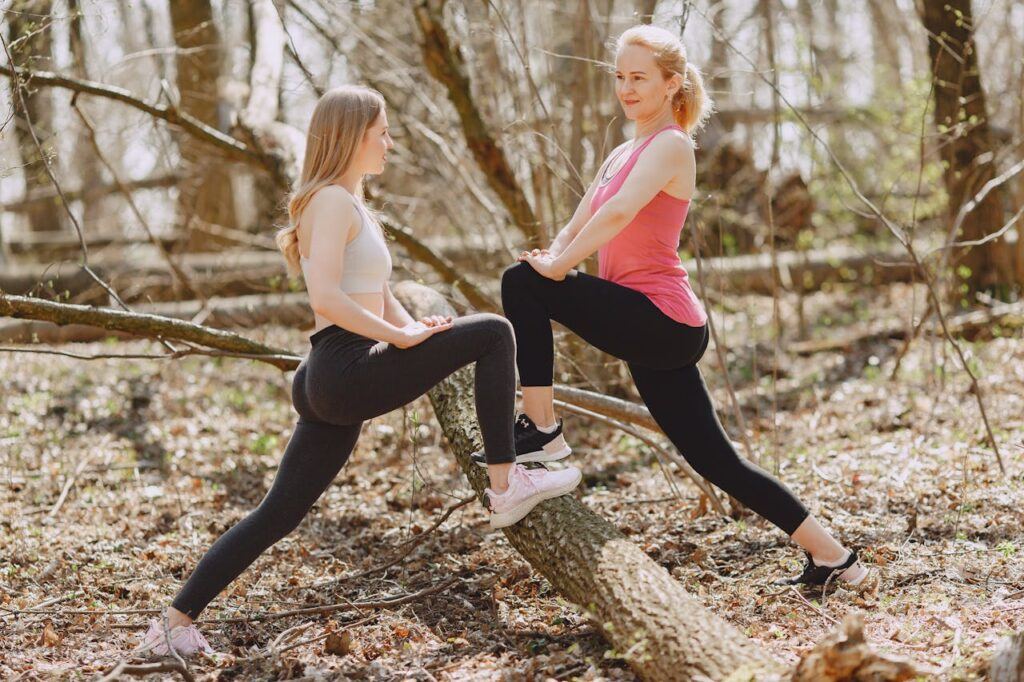
Optimal Summer Hiking Attire: Dress to Impress (and Stay Cool!)
In the realm of summer hiking, what you wear can have a big impact on your comfort and safety. Selecting the right fabrics is crucial. Opt for materials like cotton or linen, which offer breathability and help your skin stay cool. These choices are not just about comfort, they prevent overheating by enabling better air circulation around your body.
Accessories play a pivotal role in protecting you from the harsh sun. A wide-brimmed hat is more than just a style statement; it offers shade to your face and neck. Pair that with UV-blocking sunglasses to keep your eyes shielded from intense rays. It’s smart to wear sunscreen even on cloudy days, as UV rays can easily penetrate through clouds.
Choosing the right footwear is vital. Lightweight hiking boots or trail shoes with good ventilation keep your feet comfortable and prevent overheating and blistering. Ensure they offer solid support, as traversing different terrains requires stability.
Layers aren’t just for cold weather. Light, loose layers allow you to adjust as temperatures change, especially on trails with varying exposures to sunlight and shade. Having a thin, long-sleeved shirt handy to shield your arms or offer an additional layer when temperatures drop slightly is always a win.
Building Endurance and Experience: Preparing for Hot Weather Hikes
Training your body for summer hikes is as important as packing the right gear. Getting used to different weather conditions can boost your endurance and improve your comfort when hiking in the sun. Slowly expose yourself to heat over several short hikes, gradually increasing duration and complexity. This helps your body adapt to the demands of hot-weather hikes.
Enhancing your trail knowledge can deepen your hiking experience. Consider joining workshops or online forums dedicated to hiking safety and techniques. These resources often offer insights from experts on tackling various challenges, including those posed by summer hikes.
Connecting with seasoned hikers can be incredibly valuable. Listening to their experiences within community networks or clubs allows you to learn from their successes and mistakes. Plus, being part of a hiking community can make your adventures safer and more enjoyable by providing support and shared experiences.
Evaluating your progress post-hike is a good habit. Reflect on what went well and what could be adjusted for future hikes. Tracking how your body responds to different conditions helps in refining your approach, ensuring each hike contributes to building your confidence and competence in the great outdoors.
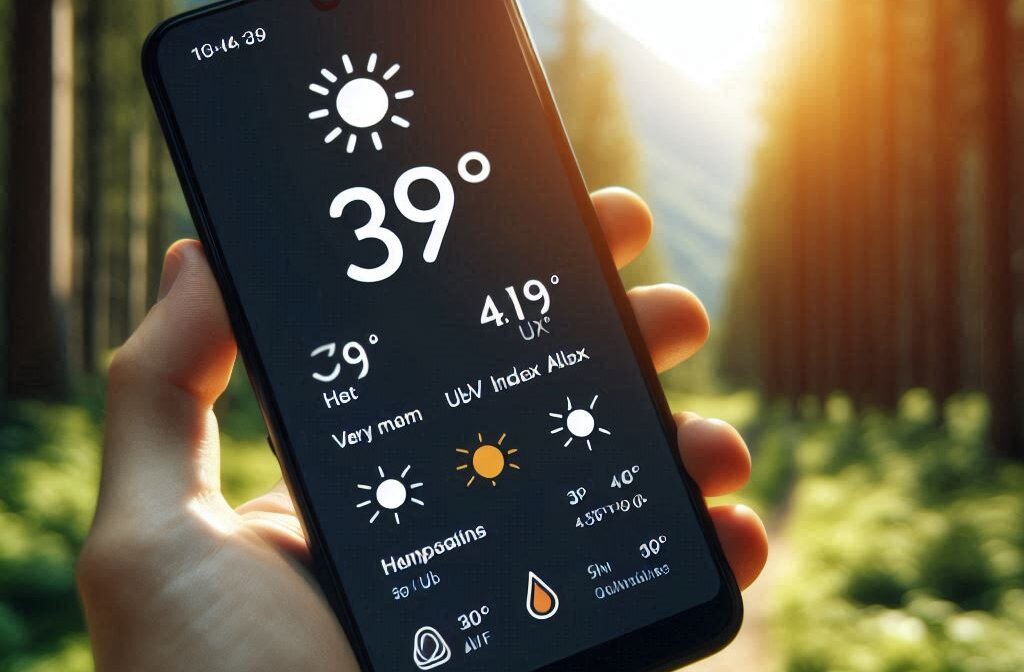
Summarizing – Hiking Heat Exhaustion Prevention:
🌡️ When It’s Too Hot to Hike: Know Your Limits
🔍 Always Check:
- Weather forecast
- UV index
- “Feels like” temperature
- Humidity levels
High humidity can make it harder for your body to cool itself.
If it’s dangerously hot:
- Postpone the hike
- Head to a shaded park
- Try an indoor workout
You’re not losing the adventure – you’re protecting it for another day.
🌟 Final Thoughts: Safety First, Adventure Always
Hot-weather hiking can be exhilarating – if you’re prepared. Keep hydration front and center, wear smart clothing, and hike early. Always listen to your body, and remember: the trail will always be there tomorrow.
